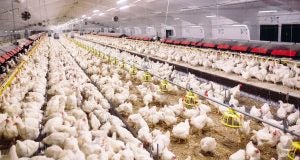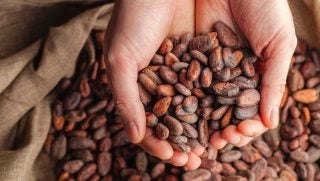U.S. Department of Agriculture Secretary Tom Vilsack said that the agency is making up to $215 million available in grants and other support to expand meat and poultry processing options, strengthen the food supply chain, and create jobs and economic opportunities in rural areas.
Today’s funding opportunity is one of the actions that the USDA is taking to expand processing capacity and increase competition in meat and poultry processing to make agricultural markets more accessible, fair, competitive, and resilient for farmers and ranchers.
“For too long, ranchers and processors have seen the value and the opportunities they work so hard to create move away from the rural communities where they live and operate,” Vilsack said. “The funding we’re announcing today ultimately will help us give farmers and ranchers a fair shake and strengthen supply chains while developing options to deliver food produced closer to home for families.”
USDA Rural Development will make $150 million available in grants to fund startup and expansion activities in the meat and poultry processing sector. The USDA’s National Institute of Food and Agriculture will provide another $40 million for workforce development and training, and the Agricultural Marketing Service (AMS) will provide $25 million to offer technical assistance to grant applicants and others seeking resources related to meat and poultry processing. These new opportunities are part of the administration’s commitment to fight monopolization and promote competition across the economy.
Meat and Poultry Processing Expansion Program
USDA Rural Development is making $150 million of American Rescue Plan Act funding available through the Meat and Poultry Processing Expansion Program (MPPEP). The USDA is offering grants of up to $25 million each to expand processing capacity through a variety of activities, including but not limited to construction, expansion of existing facilities, and acquisition of equipment.

The USDA will host two informational webinars to provide information on MPPEP. The first, Feb. 28 at 2 p.m. Eastern Time, will provide an overview of the program. The second, March 7 at 2 p.m. Eastern Time, will cover application requirements. Registration information for the webinars is available on the MPPEP website. For additional information, applicants and other interested parties are encouraged to visit the MPPEP website: www.rd.usda.gov/mppep. Questions may be submitted through the website or sent to MPPEP@usda.gov.
All application materials can be found online and must be received by 11:59 p.m. Eastern Time on April 11, 2022. The USDA encourages applications that benefit smaller farms and ranches, new and beginning farmers and ranchers, Tribes and tribal producers, socially disadvantaged producers, military veteran producers, and underserved communities.
Meat and Poultry Processing Workforce Development
The USDA’s National Institute of Food and Agriculture (NIFA) will invest an additional $40 million through existing workforce development programs to provide a pipeline of well-trained workers to meet the demand for both current processors and increased independent processing capacity. The primary investment will be through competitive grants to support workforce training at community, junior and technical colleges with programs specifically for meat and poultry processing. A Request for Applications will be published in April 2022. Additional investments will leverage existing regional USDA education and Extension networks and establish new, or supplement select existing, Centers of Excellence at Minority-serving Institutions focused on meat and poultry research, education and training. Each of these investments is designed to deliver needed support more quickly. Additional investments, either through the same or new programs and partnerships, are expected later this year. To sign up for notifications of these and other NIFA funding opportunities, visit the NIFA website.
The USDA expects to continue working with the Department of Labor to support and encourage the development of good jobs in the agricultural sector, including jobs in meat and poultry processing.
Meat and Poultry Processing Technical Assistance
The USDA also is helping to ensure that entities proposing independent meat and poultry processing projects through the Meat and Poultry Processing Expansion Program (MPPEP) have full service technical assistance support from application through post-award. The USDA’s Agricultural Marketing Service (AMS) will provide approximately $25 million in American Rescue Plan funding to establish partnerships with organizations that will provide technical assistance to MPPEP applicants, recent recipients and future applicants of the Meat and Poultry Inspection Readiness Grant program, and to entities who require general guidance and resources on meat and poultry processing. Of the $25 million, AMS will utilize $10 million to implement the first phase of support by establishing an initial technical assistance network and lead coordinator. More information about the technical assistance is available at the Meat and Poultry Supply Chain website.
The USDA’s one-year supply chain report, also published today, assesses the opportunities, including today’s significant investment in the meat and poultry sector, that USDA, other Federal agencies and Congress have made over the long-term to infuse stability, improve equity, diversify and expand infrastructure and markets, and transform the food system.
“Investing in packing capacity is critically important for the cattle industry,” said National Cattlemen’s Beef Association Director of Government Affairs and Market Regulatory Policy Tanner Beymer. “The expansion of regional processing facilities will bolster resiliency within the beef supply chain and help return marketing leverage to cattle producers.”


